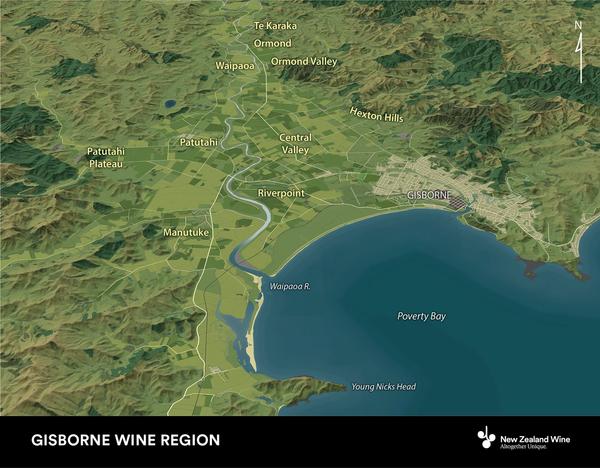
Gisborne
Gisborne rewards those who take a trip east with a diverse range of wines, from full-flavoured and fruit-driven, to critically acclaimed biodynamic classics.
Key statistics
1,245
4%
22

Characteristics
About the region
The mix of high sunshine, verdant landscapes, fascinating history, a laidback lifestyle and the exciting range of wine styles makes Gisborne a beguiling destination for the wine traveller.
Those making the journey east are rewarded with a diverse range of wines from flavoursome entry-level to critically acclaimed biodynamic classics. A dynamic food and wine scene completes the picture.
Rich in history, Gisborne can claim Captain Cook’s first landfall as well as being the first place in New Zealand to see the sun rise. Vines were first planted in the 1850s with the modern industry soundly established from the 1960s onwards, when Montana
(now Pernod Ricard NZ), Penfolds and Corbans Wines built wineries. Large producers still feature but Gisborne is shaking off its history of bulk production; small-scale quality producers and entrepreneurial growers experimenting with new varieties and sites point to its future.
Chardonnay is the dominant variety and enjoys great success, though a very wide range of red and white varieties are successfully established and new varieties are always trialled. Hillside land is being explored and matched with new varieties and clones; Gisborne’s renaissance is fully underway.

















